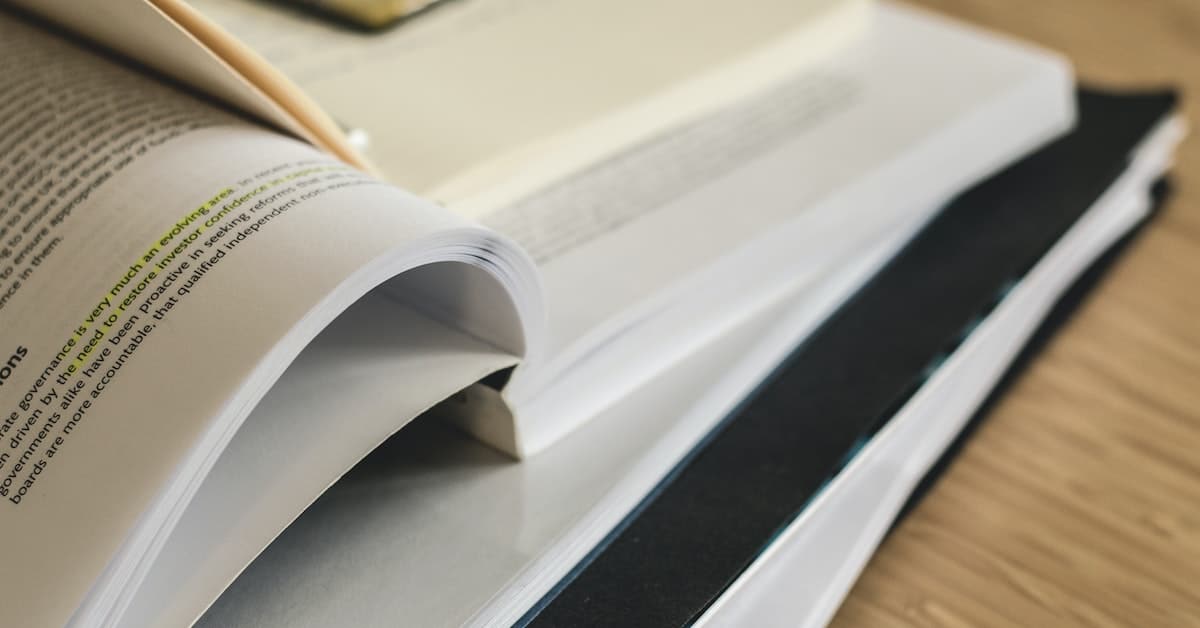When you think of the concept of different writing styles, your mind might first go to Ernest Hemingway's famously concise, objective prose or James Joyce's intricate stream-of-consciousness passages.
From this perspective, one would assume that there are an infinite number of writing styles. Or, at the very least, as many writing styles as there are writers.
 In broader terms, though, it's generally accepted that there are only four different basic writing styles. These are expository, descriptive, persuasive, and narrative. The intention of each of these styles is as follows: expository writing explains, descriptive writing describes, persuasive writing convinces, and narrative writing tells a story.
In broader terms, though, it's generally accepted that there are only four different basic writing styles. These are expository, descriptive, persuasive, and narrative. The intention of each of these styles is as follows: expository writing explains, descriptive writing describes, persuasive writing convinces, and narrative writing tells a story.Within each of these, an author's tone, voice, diction, word choice, sentence structure, and so much more can further define their personal style. Beyond that, these styles are mutually exclusive-- a piece of writing might contain several of them. Let's take a closer look at what you need to know about these four primary writing styles.
An author's writing style is determined by both their purpose in writing as well as their audience. While every writer has their own unique voice and their work is a reflection of their own personality and style, every piece of writing is ultimately created for a specific purpose.
One could say that there are as many author writing styles as there are writers. At the same time, writing styles can actually be broken down into four broad categories.
The writing styles we'll discuss in this article have to do with the basic intent of a piece of writing and the desire of the audience. For example, the expository writing style is used to explain something in a fact-based, bias-free way. On the other hand, narrative writing focuses on telling a story and doesn't necessarily require incorporating data, figures, or research that backs up any specific claim.
While you'll find different opinions on the number of different writing styles, it is generally accepted that there are four basic writing style categories.
These are:
Within each of these, there are obviously many ways that an author can distinguish themselves stylistically. However, understanding these four broad groups can help writers approach their craft more deliberately and write more effectively.
Expository writing aims to provide an explanation of a specific concept and provide information to the reader. This type of writing style focuses on the facts of the topic at hand and provides stats, evidence, or results to explicate the subject further.

Examples of expository writing: Technical, business, or scientific writing, how-to articles, recipes, news stories (that aren't op-eds or editorials), and textbooks
As opposed to persuasive writing, which we'll discuss below, writers do not typically express their opinions when writing in the expository style.
When you read an expository essay, you're engaging with facts and figures that are relevant to the topic at hand. This is the type of writing you come across when you read a how-to article online or are reading a textbook studying for an exam.
You'll typically find that expository pieces are written in a logical sequence and order. This isn't the type of work to get structurally creative with-- the idea is to explain something in a straightforward manner without including one's opinion.
Are you wondering whether your writing style can help you earn a high income as a freelance writer? Make sure you check out our list of the highest paying freelance writing niches.
Any type of writing that helps a reader understand something in detail can be considered an example of the expository writing style.
That being said, some of the most common examples of this type of writing include:
If you want to write in the expository style, here are some tips to keep in mind:
Descriptive writing intends to offer imagery to the reader so that they can have a clear picture of what is being described. This can help the audience engage with the writing using their senses and become more connected to the piece.
Examples of descriptive writing: Memoirs, journal or diary writing, fictional novels or plays, poetry, and first-hand accounts of events
Descriptive writing is often poetic in nature. When an author writes descriptively, they are helping the audience understand the sensory experience of being in a certain place. They illustrate the sights, sounds, smells, atmosphere, and vibes of a place, event, location, situation, or person. Descriptive writing is highly detailed as it intends to really provide a picture for the reader.
Is descriptive writing one of your strengths? Make sure you take a look at our guides to getting paid to write poetry and finding greeting card writing jobs.
Let's look at a few examples to help you get a better picture of what we're talking about when discussing descriptive writing.
Here's a passage from Ernest Hemingway's A Farewell to Arms:
“In the late summer of that year we lived in a house in a village that looked across the river and the plain to the mountains. In the bed of the river there were pebbles and boulders, dry and white in the sun, and the water was clear and swiftly moving and blue in the channels. Troops went by the house and down the road and the dust they raised powdered the leaves of the trees. The trunks of the trees too were dusty and the leaves fell early that year and we saw the troops marching along the road and the dust rising and leaves, stirred by the breeze, falling and the soldiers marching and afterward the road bare and white except for the leaves.”
Do you see how Hemingway paints a picture using the sense of sight? His famous straightforward manner makes it easy for any reader to imagine they're right there in the scene.
Another example comes from The Great Gatsby:
“The flowers were unnecessary, for two o’clock a greenhouse arrived from Gatsby’s, with innumerable receptacles to contain it. An hour later the front door opened nervously, and Gatsby, in a white flannel suit, silver shirt, and gold-colored tie, hurried in. He was pale, and there were dark signs of sleeplessness beneath his eyes.”
Here, F. Scott Fitzgerald creates an image of Gatsby that helps the reader visualize precisely what is happening. This is a great example of how descriptive writing can remain short and precise while still being very effective.
When using the descriptive style, keep the following tips in mind:
Persuasive writing is just what it sounds like-- a writing style where the author is attempting to convince the reader that a certain argument or position is valid. This type of writing will include the writer's opinions and will also incorporate evidence and justifications to support their claims.
Examples of persuasive writing: Editorial newspaper articles, op-eds, cover letters, letters of recommendation, academic argumentative essays, advertisements, and reviews
It's common for persuasive writing to contain what is known as a "call-to-action." This is essentially a step that the author wants the reader to take when they finish with the piece. In an advertisement, a call-to-action might relate to buying a specific product or signing up for a service. In a political speech, this might be a rallying cry to vote in the next election or get further involved in a particular social issue.
Persuasive essays and speeches have assisted a number of significant historical movements and events.
Some famous examples from history include:
Persuasive writing is also common in advertising campaigns. Some famous ones you might remember (or even still see on TV screens, billboards, and magazine ads) include:
Though it might sound strange that "Where's the Beef?" is considered the same writing style as Lincoln's Gettysburg Address, the reality is that both political speeches and advertising campaigns heavily rely on persuasive techniques.
If you'd like to practice using the persuasive style, use these tips to help guide you:
Narrative writing aims to share information with the reader within the context of a story. Narratives include settings, characters, and conflicts.

Examples of narrative writing: Novels, short stories, historical accounts, and poetry
A narrative can be fiction, non-fiction, or lie somewhere in the gray area in between. When an author tells a narrative story, they're describing a story or event using characters and dialogue. In most cases, narratives will have a clear beginning, middle, and end following the narrative story arc.
Though different terms can be used to explain the basic structure of a narrative, here's one common model:
Is self-publishing a book on your bucket list? Take a look at our guides to self-publishing a book on Amazon, the ideal length for an ebook, and how to price an ebook. Before you hit "publish," check out our post about how to find the best book editor to make sure your work is error-free and well-crafted.
Narratives- whether they're novels, TV shows, films, short fiction, biographies, or other works- involve several key elements worth understanding.
These include:
There are countless examples of narrative writing that you can explore as you learn more about the different writing styles.
Here are just a handful of famous examples:
When writing a narrative piece, keep the following tips in mind:
Learning about different writing styles can help you be a better writer, whether you do so as a hobby or as a career. One of the great things about writing is that just about anyone can get into it, but then there is so much depth when it comes to learning more, developing your skills, and honing your craft.
I started Freelance Writing Jobs because I'm in a unique position, having worked both as a freelance writer and as a site owner managing writers. Being able to see things from both sides of the aisle, I wanted to create a place where clients and writers could find one another in an easy, streamlined way.
From that desire, the Freelance Writing Jobs board was born! This is a place where you can find brand new posts every day from high-paying clients. Whether you're looking to write expository how-to articles or narrative blog posts, you can find it all on our job board.
We encourage you to share this article on Twitter and Facebook. Just click those two links - you'll see why.
It's important to share the news to spread the truth. Most people won't.